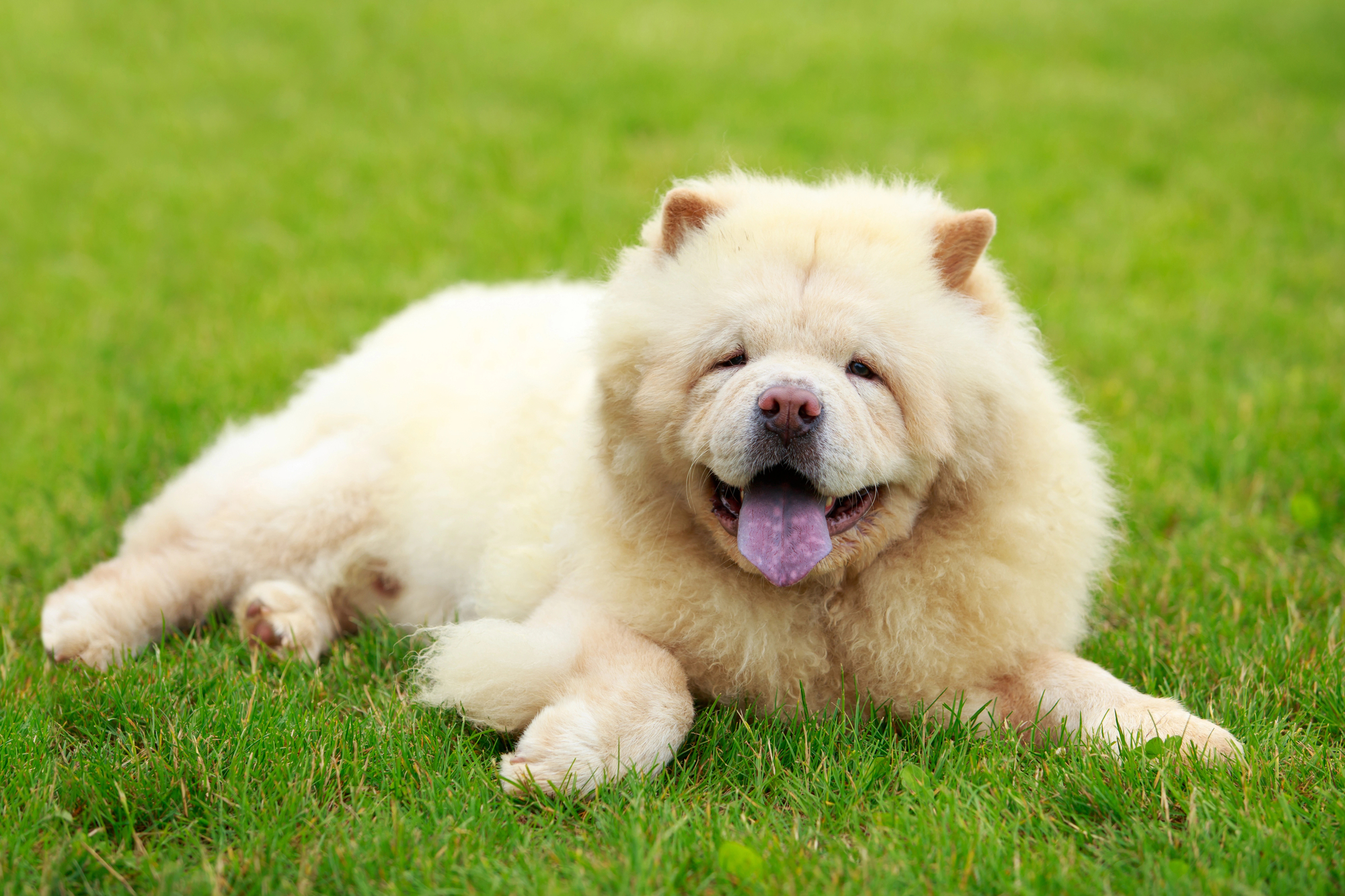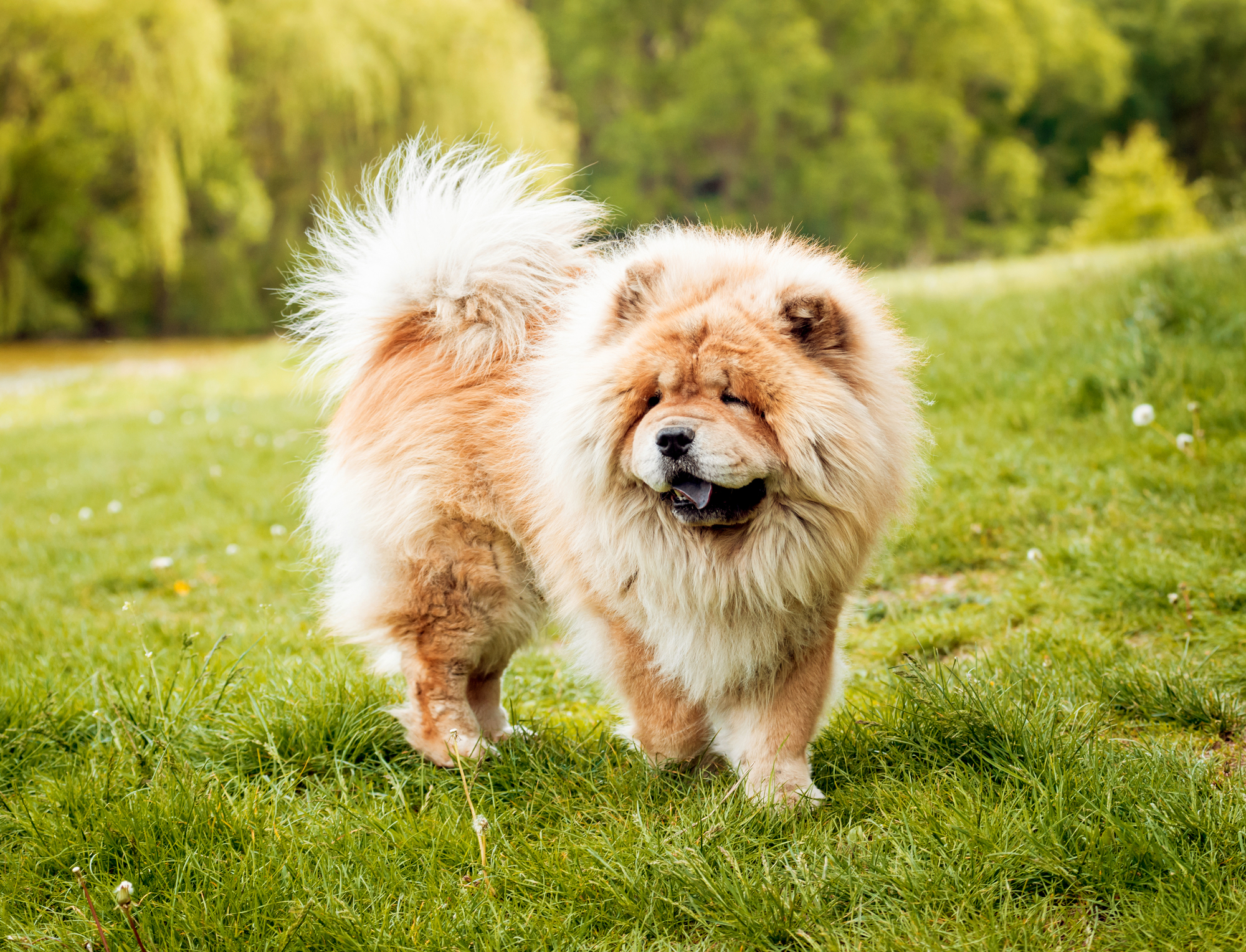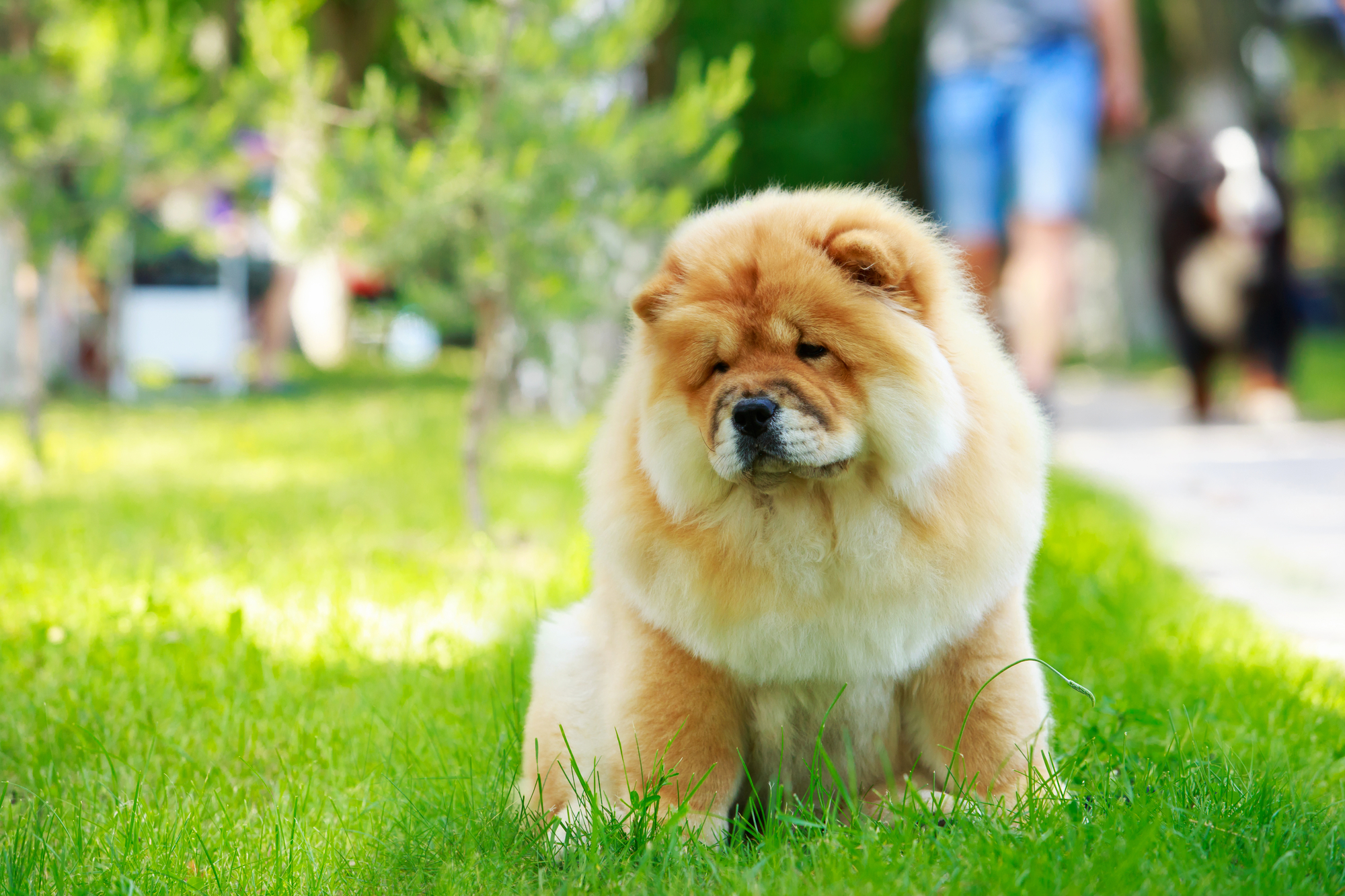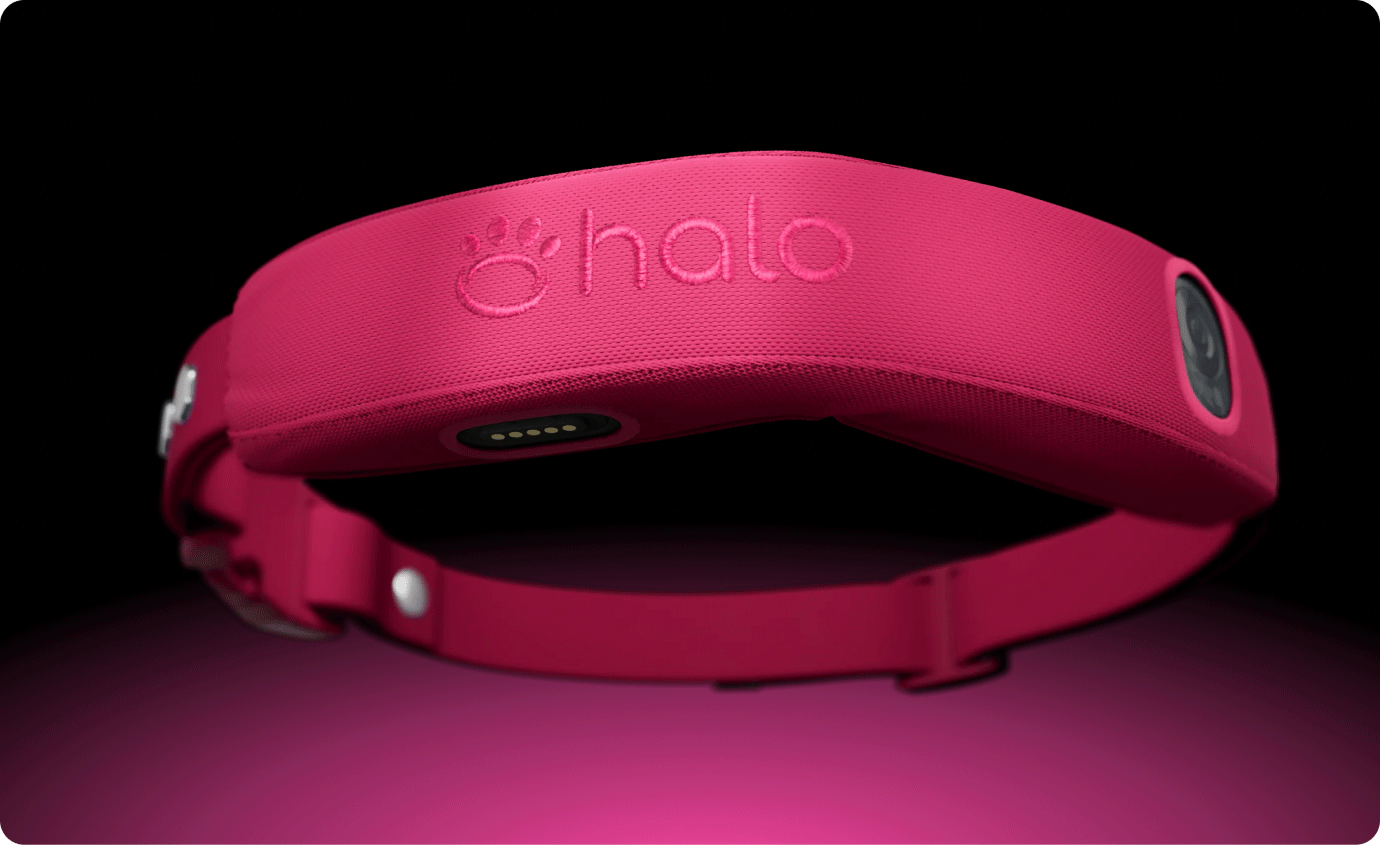Your Cart

Halo is backed by a 90-day satisfaction guarantee
Subtotal$0
Tax & Shipping Calculated at checkout
Total $0
The chow chow is one of the oldest dog breeds. Ancient historical records mention encounters with a lionlike dog with a black tongue, and Chinese sculptures and pottery show images of the chow as far back as 206 B.C.
The chow’s beautiful head, thick fur coat and reserved manner hint at this dog’s aristocratic roots. The chow has been a favorite of celebrities over the years. Sigmund Freud owned several chows. Dr. Freud said his dog, Yofi, helped calm distraught patients during therapy sessions.
Chows are known for their intelligence, noble stare and majestic appearance. If you’re interested in owning a chow, review the following facts and details about this unique dog. You’ll learn how much grooming is required (a lot) and what health risks chows face. You’ll also discover why this dog is so valued by its owners.
The chow has been a favorite of celebrities over the years.

Male: Weight: 45-70 lbs; Height: 17-20 inches
Female: Weight: 45-70 lbs; Height: 17-20 inches
Not particularly
Not particularly
Devoted to their families
Responsive, with positive reinforcement
Twice weekly brushing
8-12 years
Alert, protective, dignified
Affectionate with family, adaptable, intelligent
Red, cinnamon, black, blue, cream
Adjustable; Fits most dogs

In shape, the chow resembles a perfect square; the distance from its shoulder to the ground equals the distance from chest to rear. Its proportions emphasize the muscular legs and chest of this sturdy dog. Females may be slightly smaller than males but should have the same overall appearance.
The chow’s head is distinctive, starting with an abundance of furrows, giving the dog an almost human expression of snobbery. Add a thick coat that nearly obscures the upright ears and almond-shaped, tilted eyes and you get a dog that looks like a Chinese imperial guard lion.
The chow chow AKC standard prefers an all-black mouth, with gums and tongue appearing bluish-black, although some chows may have speckled tongues. Chows come in five solid color varieties: red, cinnamon, black, blue and cream.
The dense coat of a chow can be rough or smooth. Both types have woolly undercoats.
Chows are an independent breed and can be stubborn. Good training is essential for bonding and developing good manners at home and away. The chow’s intelligence means it can quickly learn commands and habits. However, it can become withdrawn if treated harshly. Therefore, use positive reinforcement with lots of praise to encourage your chow to succeed. Avoid yelling or any physical action. Chows can hold onto hurt feelings, making them difficult to win over once you lose their trust.
Chow puppies need early socialization to prevent them from becoming aloof and unapproachable. Take your chow puppy out and about, letting it meet a variety of people and experience different sights and sounds. Get it used to being handled from head to tail. This will make grooming your dog much easier for you or someone else.
Puppy obedience classes provide socialization and beginner training for both you and your dog. Keep in mind that chows aren’t naturally friendly with other dogs, so aim for acceptance of the situation, not playful interactions.
As your chow matures, you can move on to other types of training. The chow’s personality and intelligence can cause them to think they’re the alpha dog of your family (or pack). You must show your dog that you and all other family members are ahead of it in rank. This is essential to raising a well-adjusted chow. Your dog needs a leader, and you have to provide one.
Teaching basic commands, such as sitting and staying, and asking your dog to perform these actions before eating, walking or going outside can help earn its respect. The sturdiness and size of the chow also make heeling important. Many chow chow owners find that using a wireless GPS dog fence is a great way to give their dog a bit of freedom to roam while keeping them safe and closeby. These fences can be a good safety net when teaching a chow obedience commands, as they can’t run or roam away during the training session.
Chows aren’t necessarily the best breed for agility and rally competitions. The dogs are certainly capable of learning and performing these actions. However, their aloofness can make them uninterested. They can also become overheated. If your dog enjoys these activities, feel free to compete.
You must brush your chow frequently to remove dead hair and skin and prevent matting. Getting your puppy accustomed to being handled and brushed will greatly improve grooming chores when your chow is an adult. A covered grooming table is an excellent investment to secure your dog and protect your back.
The chow’s thick double coat must be brushed all the way through, with particular attention paid to the tail, chest, armpits and groin. A steel-toothed comb and brush can make this job more manageable. As you work through your dog’s coat, gently remove knots, check for parasites and discard excess fur. Afterward, run the comb or brush over your chow so its coat lies in a tail-to-head direction.
You should also wipe the ears and eyes to keep them clean and free of infection. Bathe your chow monthly or as needed. Over-bathing can dry out skin and fur. You’ll need to fully dry its coat, starting with towels and finishing with a blow-dryer. You may want to send your chow to a professional groomer for baths if you don’t have the necessary equipment.
Don’t forget to check the length of your dog’s toenails during grooming sessions. Frequent clippings are much more effective than sporadic trimmings.
While there are trim styles for chows — for example, the lion and teddy bear — you don’t need a specific cut. You can keep your dog looking neat with minor shaping around the face and feet or ask a groomer to do a puppy cut, trimming the hair all over. Never shave your chow, as its double coat provides an insulating effect in winter and summer.
Finally, be prepared for the seasonal shedding that chows experience, usually in the spring and fall. At those times, you’ll need to groom more frequently.
Chows are prone to several medical conditions, including hip and elbow dysplasia, thyroid problems, patellar (kneecap) luxation and allergies. In addition, they can develop entropion, a condition that causes the eyelid to turn inward toward the eyeball. The eyelid and eyelashes then rub against the eye, producing excess tears, irritation and, eventually, ulcers. This condition can lead to blindness. Temporary cases of entropion can be treated with medication. However, surgery is the treatment of choice for permanent relief.
To minimize your risk of owning a dog with health issues, buy from a reputable breeder who practices health screenings. Entropion can appear later in a dog’s life and isn’t always related to genetics. To make sure your puppy is in good health, take it to a veterinarian as soon as possible for an initial visit.
After vaccinations are complete and your dog is past the puppy stage, you should have it checked once a year. Seniors may require more frequent exams. Keep your chow at a healthy weight and provide regular exercise to help your dog stay fit and reduce its chances of developing joint problems.

Chows need a well-balanced diet to thrive. You can find a proper mix of nutrients in a good-quality dog kibble. Consistency is important to help your dog digest foods properly and promote good bathroom habits.
Your chow puppy will most likely need to be fed three times a day. After the dog reaches 1 year old, you can reduce the frequency to one or two feedings a day. Depending on their size and activity level, most adult chows will need about 4 cups of food per day, either all at once or split into two servings, morning and evening. As your chow ages, it may require less food and prefer two smaller feedings rather than one large one.
Chows can develop skin problems if fed too much meat, and many owners choose a low-grain diet. There are pros and cons regarding mixing dog kibble with water. You may have to experiment a little with your dog to find what works best. Chows will overeat if allowed, so don’t leave a bowl full of food out for self-feeding. Fresh water should always be available.
Rawhide isn’t safe for dogs like chows to chew, as they can break off large pieces, leading to stomach blockage and choking. Look for human-made edible chews that are long-lasting and large enough for a chow to chew.
Chows have moderate exercise requirements — a few daily walks and gentle play. Extreme roughhousing and runs should be avoided. Please don’t take them out in the heat of the day as they can get heat prostration.
The chow is highly intelligent but laid-back. Don’t be surprised if your dog prefers to lay near you rather than play with toys. You may get some interest in interactive treat balls, but between walks, your chow may just want to relax.
It’s essential to keep up with socialization with a chow dog; it’s a lifelong commitment. Take it on frequent walks and let it meet people out and about and at home. A chow that becomes too secluded may start to feel threatened by new people. This can lead to aggression.

Your chow can be a loving, integral part of your household as long as it understands its place. Chows can quickly attempt to dominate if left unchecked. Its intelligence and independence may make the dog seem aloof, but it’s a highly devoted breed.
While the chow needs frequent brushing, at least twice a week it’s considered a very clean dog with little odor. The chow requires moderate exercise, so it’s suited to urban or rural life.
Obedience training and socialization are key to ensuring your chow gets along with other family members, including children. Young children should always be supervised around dogs. Be aware that your chow may need personal space; the breed doesn’t usually accept constant petting and touching.
The chow isn’t a pack type of dog, so it may have difficulty accepting other pets. If you want to introduce another dog into the household, it’s best to go with one of the opposite sex.
The chow’s thick coat can make it unsuited to hot climates. Chows can experience heat prostration, which can be fatal. Air conditioning is necessary if you live in a hot or humid region.
Chows can be very affectionate and loving with their family or pack. That said, dogs should always be supervised around young children. In addition, make sure your chow is properly socialized and has experienced obedience training.
Chows are highly protective of their family circle, so be careful if your child roughhouses with friends around the dog. Make sure your children know how to approach and handle dogs.
Chows need only moderate exercise of a relaxed variety. Daily walks and casual play are enough for this laid-back dog. Using a wireless GPS fence for dogs can allow a chow chow freedom to play while keeping them safe. Avoid overheating the chow due to its thick double coat. Early morning or late evening walks are best during warmer months.
Chows need frequent brushing, at least twice a week. In fact, the more frequently you groom your chow, the easier it will be on both of you. Brushing helps remove dead hair and prevents matting. Bathing can be performed monthly. Nails should be examined frequently and trimmed if necessary. Minor clipping around the face and ears can help improve the look of your chow and make it easier for the dog to see. Be prepared for heavy seasonal shedding.
The chow is very intelligent; if it wants to learn or perform for you, it certainly can. The trick will be getting it to cooperate. Positive reinforcement is vital for getting your dog to trust you. In addition, you must ensure the dog considers you its pack leader. Stand tall and avoid submissive behaviors such as getting on your knees, letting your dog win at tug-of-war or allowing it in your bed. The more your chow considers you the alpha dog, the more it will obey your commands.
Chows can develop eye problems due to entropion. This condition, which can occur in humans as well as dogs, causes the eyelid to turn in. When this happens, the dog’s fur and eyelashes rub against the eye’s surface. If left untreated, entropion can lead to eye ulcers and vision loss. Surgery is the best permanent solution for entropion.
Chows can also have hip and elbow dysplasia and thyroid problems. To catch any health issues early, take your puppy to a veterinarian soon after getting it. Then, continue with yearly checkups.
Chows can live for 8 to 12 years. You can help your chow stay fit and trim by providing nutritious food and regular exercise. Keep your chow safe using a wireless fencing solution or a physical barrier and insert a microchip for easy tracking.
Chows aren’t known for living in a pack setting. They also have a natural distrust of new people and dogs. This makes them less inclined to tolerate other pets in the family. Early and consistent socialization will be the key to ensuring your chow accepts other pets. Even then, they may not take to small dogs and cats. Choosing a dog of the opposite sex can also help.
Chows need an owner who can manage them firmly and consistently. They’re better suited to adults or families with older children or whose children have been trained in dog etiquette. Chows don’t require a large space to roam and can live happily in a small apartment. The breed is clean, with low odor and infrequent barking. Their owners must be prepared for repeated grooming.
Owning a chow may be a struggle for a first-time dog owner. Effective dog training is a learned skill. Chows require a consistent, firm owner who can train without yelling or physical action. Chows that aren’t properly socialized and trained can become aggressive.
Chows also require significant grooming time.
Look for a quality dog food product with a good mix of vitamins and protein. Adult chows can eat regular-sized kibble. Puppies need smaller bites and special formulas for their stage of life. Plan to feed 4 cups of food per day.
Chows do best on a mixture that includes rice and grains, which help with digestion. Consistency is important with dog food, as frequent changes in brand and type can cause stomach upset. Chows can sometimes develop allergies, so if you notice skin problems, you may need to change food or treats. Avoid table scraps and any cooked bones, which can splinter.

With the right tools and a lot of love, you can provide your Chow Chow with a long and happy life. If you’re looking for a convenient way to track your dog’s activities while supporting training and keeping them safe, Halo Collar is a fantastic option. It is a wireless GPS fence with a convenient phone app that allows you to set up a safe perimeter at home or anywhere you go, along with helpful activity monitoring. Shop for your Halo Collar today.

Halo is backed by a 90-day satisfaction guarantee
Subtotal$0
Tax & Shipping Calculated at checkout
Total $0